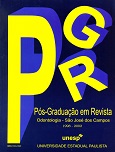Brazing and laser welding of a Ni-Cr alloy
DOI:
https://doi.org/10.14295/bds.2000.v3i2.82Abstract
Investigou-se a microestrutura e a dureza de uma liga de NiCr utilizada em próteses odontológicas soldadas com brasagem e a laser. Verificou-se que na brasagem o metal base e o cordão de solda apresentaram microestruturas distintas, e que na soldagem a laser identificou-se três regiões: o cordão de solda, a zona afetada pelo calor - ZAC e o metal base. O metal base da liga NiCr apresentou uma microestrutura dendrítica grosseira com uma estrutura eutética interdendrítica, a região da solda por brasagem apresentou uma morfologia dendrítica grosseira com a presença de precipitados e porosidades e na soldagem a laser uma estrutura dendrítica refinada. Estas microestruturas foram condizentes com as energias de soldagem fornecidas em cada processo. Os resultados dos ensaios de tração da solda a laser foram superiores aos obtidos para a solda por brasagem. Para ambos os processos de soldagem a dureza no cordão de solda foi maior do que o metal base, na soldagem a laser a dureza na ZAC foi menor do que no metal base, e sua extensão foi menor que 1mm devido à pequena energia transferida ao metal base. O emprego da soldagem a laser em peças protéticas de pequenas espessuras não deverá causar distorção significativa, sendo promissor na substituição da brasagem nesta aplicação.
Downloads
Downloads
Published
How to Cite
Issue
Section
License
Brazilian Dental Science uses the Creative Commons (CC-BY 4.0) license, thus preserving the integrity of articles in an open access environment. The journal allows the author to retain publishing rights without restrictions.
=================




























